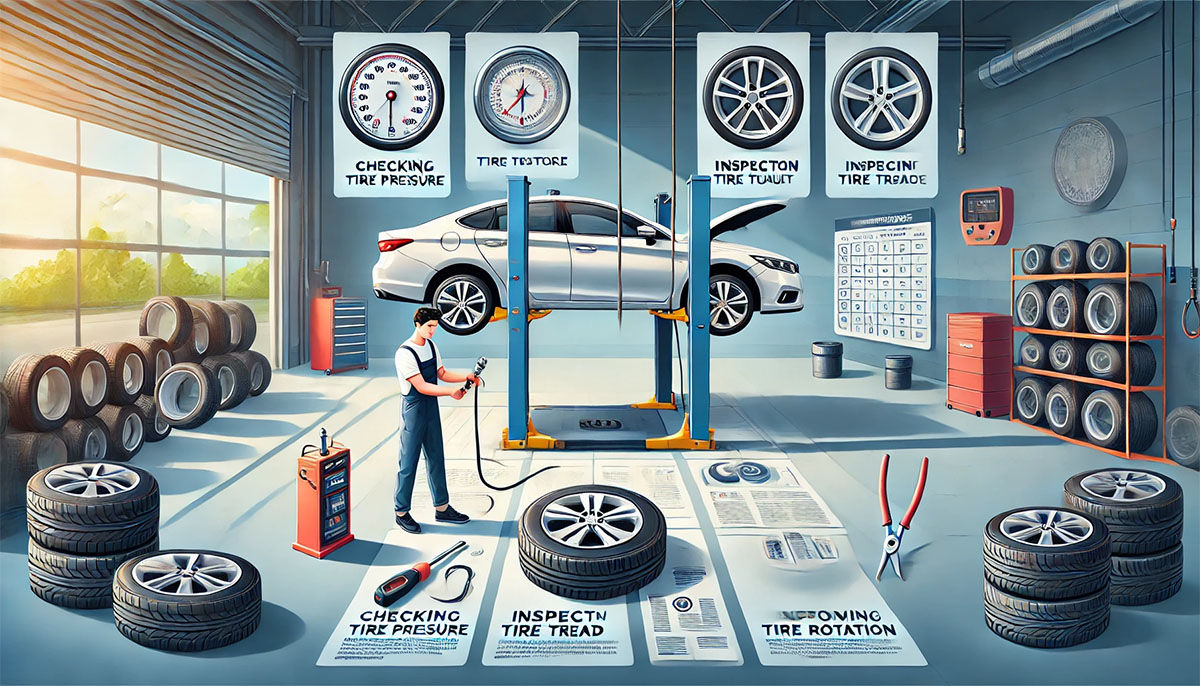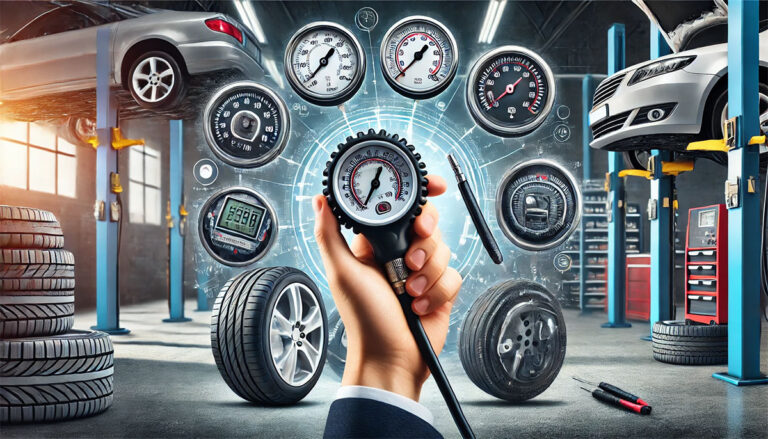Tire Maintenance: The Complete Guide for Beginners (2025)
Tire maintenance isn’t just for mechanics – it’s crucial for every driver! Did you know that proper tire care can improve fuel efficiency by up to 3% and potentially save you hundreds of dollars annually? Whether you’re a new driver or want to become more car-savvy, this guide will transform your approach to tire care!
Understanding Tire Basics
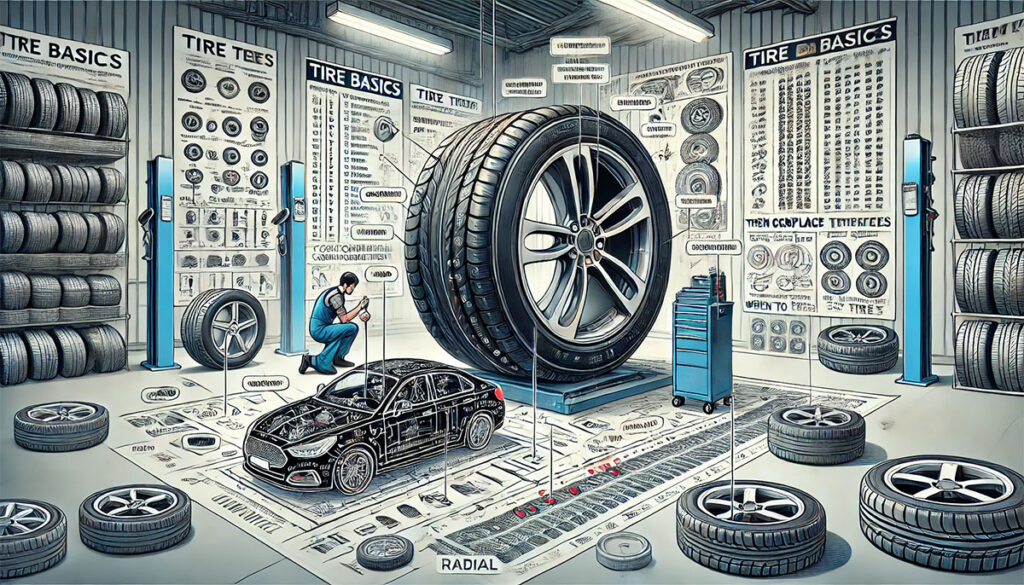
Let’s dive into the essential stuff about tires! Whether you’re a complete newbie or just brushing up on your knowledge, understanding your tires is super important. Trust me, knowing a bit about tires can save you time, money, and even keep you safer on the road. So, let’s break it down!
Tire Anatomy
First things first, let’s talk about the parts that make up your tire. It’s not just rubber, folks! Tires have a bunch of components that work together to keep you rolling. You’ve got the tread (the part that touches the road), the sidewall (where all the important info is), and the bead (the edge that seals the tire to the rim). Oh, and don’t forget the inner liner! It keeps the tire airtight. Pretty cool, right?
If you want to get more specific, here’s a great breakdown on tire anatomy from Tire Rack. They really know their stuff!
Types of Tire Construction
Not all tires are made the same way! Tires come in different constructions that affect how they perform. There are two main types: radial and bias-ply. Radial tires are the most common these days, and they have layers of steel and fabric that run radially from the center. Bias-ply tires, on the other hand, have layers that crisscross, making them a bit more rigid. You might find them on older vehicles, but for most cars today, radial tires are the go-to.
You might want to check out this comparison of tire constructions over at Tire Buyer. They’ve got lots of helpful info for tire enthusiasts!
Reading Tire Sidewall Information
Have you ever wondered what all those numbers and letters on the side of your tire mean? It’s like a secret code that can tell you everything about your tire! For example, “P215/60R16” means your tire’s width, aspect ratio, and rim diameter. Sounds complicated, but once you know what to look for, it’s pretty easy to decipher. Plus, this info helps you choose the right replacement tire if yours ever wears out.
If you want to decode the sidewall, take a look at this guide from Consumer Reports. It’ll make reading tire sidewalls a breeze!
Tire Performance Ratings
Tire performance is more than just about how it looks! It’s about how it handles in different conditions. Whether it’s wet, dry, or snowy, your tire’s performance can vary. Look for the tire’s performance rating, like treadwear, traction, and temperature grades. These ratings give you an idea of how long the tire will last, how well it grips the road, and how heat-resistant it is. You’ll want to choose a tire that suits your driving habits and environment!
Want more insight into tire performance? Check out Tire Rack’s performance rating system. It’ll help you pick the best tire for your car!
When to Replace Tires
So, how do you know when it’s time to swap out your tires? Well, there are a few telltale signs. If your tread is worn down to 2/32 of an inch (you can check this with a tread depth gauge or the ol’ penny test), it’s time for new tires. Also, if your tires are more than six years old, it’s probably time to replace them, even if they still look okay. Tires lose their grip over time due to age, and safety comes first!
For a more detailed guide on when to replace your tires, check out this helpful article from AAA. It’s packed with tips!
Regular Tire Inspection Techniques
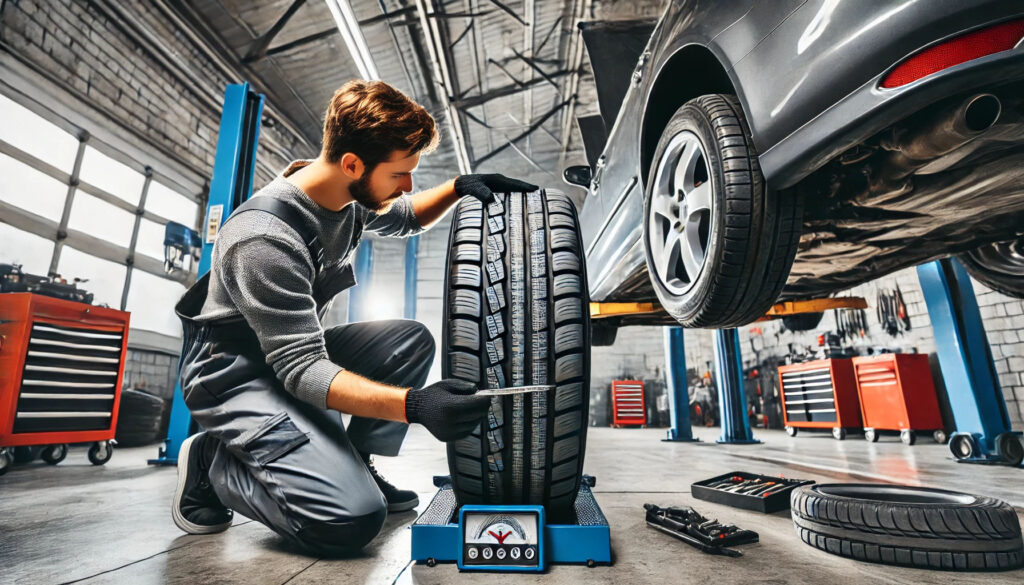
Tires are your car’s unsung heroes—they keep you connected to the road. But how do you make sure they’re in good shape? Regular tire inspections are a must! You don’t need to be a mechanic to spot potential issues. Let’s break down some easy, effective ways to inspect your tires and keep them rolling smoothly!
Visual Inspection Methods
Start with the easiest method: a simple visual check! It’s not just about looking for flat spots or obvious damage, but checking out the overall condition of the tire. Are there any bulges, cracks, or cuts? Bulges are a big red flag and could indicate internal damage, while cracks might be a sign of age. Also, take a look at the sidewalls—any weird marks or gouges? These could be signs of something serious. Don’t forget to check the valve stems for cracks or leaks too!
For a deeper dive into visual tire inspection, check out this guide from Tire Rack. It’s packed with helpful tips!
Tread Depth Measurement
The tread on your tires is what grips the road, and it’s essential to measure it regularly. You don’t want your tires to be too worn out. A quick and easy method is the penny test: insert a penny into the tread, and if you can see the top of Lincoln’s head, your tread is too shallow, and it’s time to replace those tires. Of course, you can also use a tread depth gauge for a more precise reading.
Want a more detailed explanation of measuring tread depth? AAA’s guide has got you covered with all the specifics!
Identifying Wear Patterns
Tires wear down over time, but did you know that the way they wear can tell you a lot about how your car is driving? Uneven wear patterns can signal problems like misalignment, underinflation, or issues with your suspension. For example, if the edges of your tires are worn down more than the center, you might have an underinflation issue. If it’s the opposite, overinflation could be to blame. Regularly checking for these patterns helps catch problems before they turn into bigger issues.
For more on wear patterns and what they mean, take a look at this article from Tire Buyer. It explains it all!
Signs of Tire Damage
Sometimes, tires show damage that’s hard to see with the naked eye. Look for signs of tire damage such as sidewall bulges, cuts, punctures, or foreign objects embedded in the tread. If your tire has a puncture on the sidewall, it’s pretty much done for and needs to be replaced—no patching that! If you notice any tire damage, it’s always a good idea to have a professional take a look. Better safe than sorry, right?
Need help understanding tire damage? Check out this helpful guide from Tire Rack. It covers common types of damage and how to identify them!
Recommended Inspection Schedule
You should have your tires professionally inspected at least once a year or every 12,000 to 15,000 miles, whichever comes first. If you’re someone who drives a lot (hello, road trip lovers!), you might want to go more frequently. Inspections should also be scheduled when you notice any odd behavior, like vibrations, noises, or uneven wear. Basically, if something feels off, it’s a good idea to get a pro to check it out. Better safe than sorry!
Tire Pressure Management
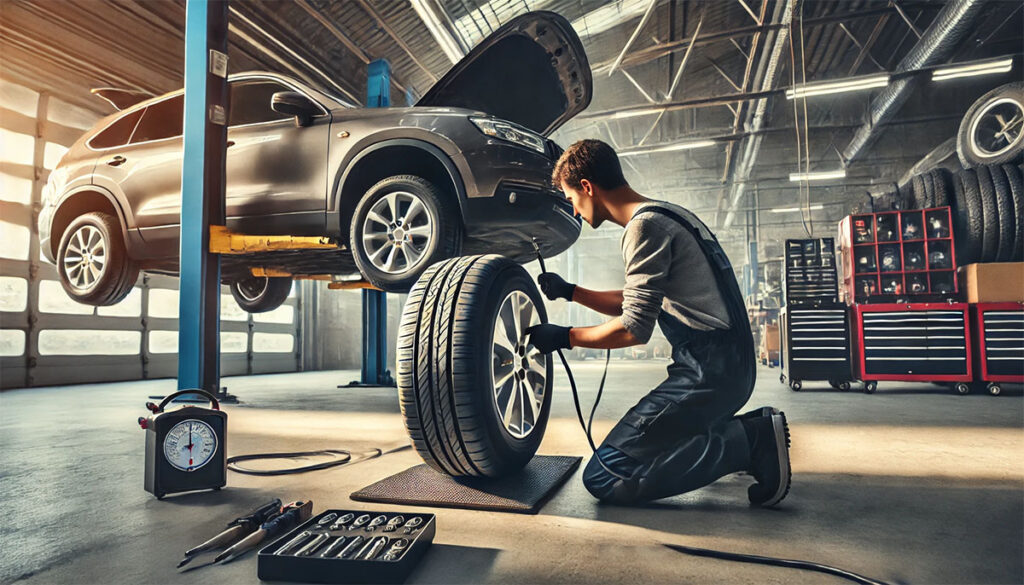
Keeping your tires properly inflated is one of the simplest but most important things you can do for your vehicle. Proper tire pressure not only boosts your safety but also improves your fuel efficiency and tire longevity. Let’s get into the nitty-gritty of tire pressure management!
Recommended Pressure Levels
So, what’s the ideal tire pressure? Well, the recommended levels are usually printed on a sticker inside your car’s door frame or in the owner’s manual. These numbers are specific to your car’s make and model, and they’re often different for the front and rear tires. Don’t just assume—always check what’s recommended, because under-inflated or over-inflated tires can cause issues.
By the way, don’t forget that tire pressure can change depending on the load you’re carrying in your vehicle. A heavy load means higher pressure. Check out your manufacturer’s guide for exact numbers!
How to Check Tire Pressure
Checking tire pressure is super easy and can be done in just a few minutes. You can buy a tire pressure gauge (they’re pretty cheap and easy to find) or visit a gas station with an air pump that includes a gauge. Simply remove the valve stem cap on the tire, place the gauge onto the valve, and read the measurement. If the pressure is too low, you can top it up using the air pump at most gas stations.
Make sure to check your tire pressure when the tires are cold, as heat can temporarily increase the pressure. You’ll get the most accurate reading that way!
Impact of Temperature on Pressure
Yes, temperature really does affect tire pressure! As the temperature drops, the air inside your tires contracts, causing the pressure to drop as well. For every 10°F drop in temperature, your tire pressure can decrease by about 1-2 PSI. This is why you might notice your tires looking a little low when the weather gets colder. In hot weather, tire pressure increases, so always check before hitting the road on those sweltering summer days.
Proper Inflation Techniques
When inflating your tires, always go slow and steady! It’s easy to over-inflate, which can create an unsafe situation. Use the recommended pressure (check your car’s manual or tire label), and don’t forget to double-check with a gauge after you’ve inflated. Also, be mindful of tire pressure when you’re on long trips. Hot tires can give a false reading, so make sure to check your pressure before you drive, not after.
Also, avoid using high-pressure air compressors if you’re just topping up. They can be too powerful for some tires. Take it slow to avoid any issues!
Consequences of Under/Over Inflation
Under-inflated tires are more dangerous than you might think. When the pressure is too low, the tire has to work harder, leading to quicker wear, overheating, and even blowouts. It also affects your fuel efficiency (hello, higher gas costs). On the flip side, over-inflating your tires can cause them to wear unevenly, creating a bumpy ride and reducing traction—yikes! So, keeping your tires at the right pressure is a win for your wallet, your safety, and your tires.
Tire Rotation and Alignment
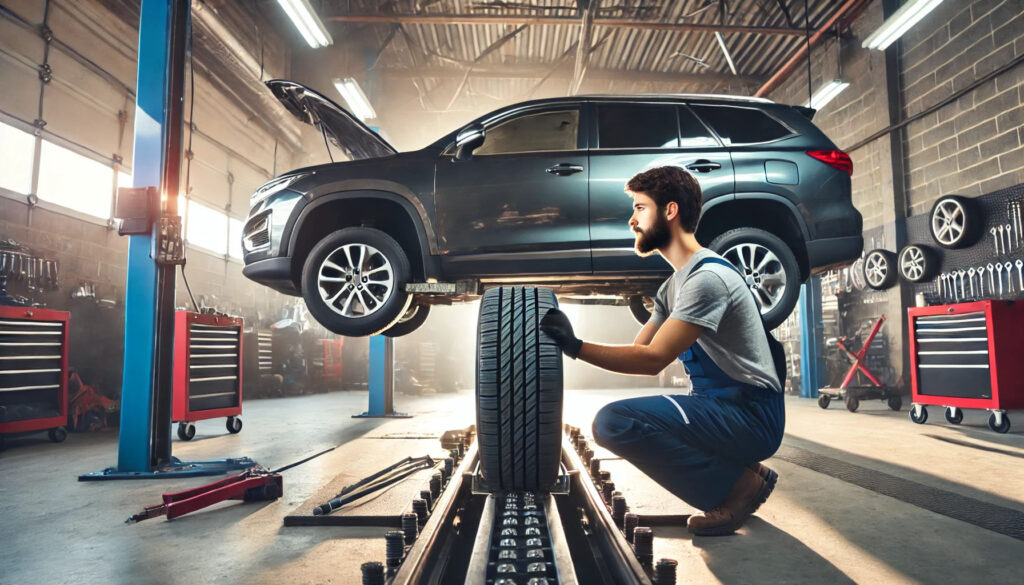
Taking care of your tires means making sure they wear evenly and stay in the best shape possible. That’s where tire rotation and alignment come in! These two simple maintenance tasks can prevent unnecessary wear and improve the overall lifespan of your tires. Let’s dive into what tire rotation and alignment are all about and why they’re so important.
Rotation Patterns
Tire rotation isn’t just about switching up your tires from front to back. There are different rotation patterns depending on the type of tires and the vehicle. Here are the common ones:
- Forward Cross: This is the most common pattern for front-wheel-drive vehicles. The front tires move to the back on the opposite sides (left front to right rear, and vice versa), while the rear tires move forward on the same sides.
- Rearward Cross: This pattern is typically used for rear-wheel-drive vehicles. The rear tires move to the front on the opposite sides, while the front tires move to the back on the same sides.
- X-Pattern: This one is used for all-wheel-drive vehicles. The front tires go to the rear on opposite sides, and the rear tires move to the front on opposite sides as well.
- Side-to-Side: This is usually only for non-directional tires and involves simply switching the left and right tires without moving them to the front or back.
Choosing the right rotation pattern for your vehicle ensures the tires wear evenly and last longer. If you’re unsure which one to use, your car’s manual will have the info you need.
Recommended Rotation Intervals
How often should you rotate your tires? Most experts recommend rotating your tires every 6,000 to 8,000 miles or so, but you can always check your owner’s manual for specific guidance. Some vehicles with special tire types might need to be rotated more often, so keep an eye on the tread wear and any unusual wear patterns. You’ll also want to rotate your tires whenever you change the oil or have other maintenance done—it’s a good reminder!
Alignment Importance
Tire alignment might sound like a small thing, but it’s HUGE when it comes to tire health. Proper alignment ensures that your tires are meeting the road at the correct angle. Misalignment can cause your tires to wear unevenly, leading to quicker tire degradation and poor handling. Plus, improper alignment can affect your fuel efficiency and make your car pull to one side, which isn’t fun to drive!
Having your alignment checked regularly (about once a year or every 12,000 miles) helps prevent these issues and ensures that your tires are getting the best use possible.
Signs of Misalignment
How do you know if your car needs an alignment? There are a few clear signs:
- Pulling to one side: If your car drifts to the left or right without you steering it that way, it could mean your wheels are out of alignment.
- Uneven tire wear: If one side of your tire is more worn down than the other, that’s a big sign of misalignment. Your tires should wear evenly across the tread.
- Steering wheel vibration: A vibrating steering wheel can also indicate that your wheels are misaligned and need to be adjusted.
If you notice any of these signs, it’s a good idea to get a professional alignment check ASAP.
Professional Alignment Services
While you can do tire rotations yourself, alignment is a different story. It’s a job that requires special equipment and expertise. Professional alignment services are relatively affordable and can save you money in the long run by preventing uneven tire wear. Many auto shops offer free alignment checks, so there’s no excuse to skip it!
Getting a professional alignment done regularly ensures your tires last longer and your car drives more smoothly. Plus, it helps you get better gas mileage, which is always a win.
Seasonal Tire Maintenance
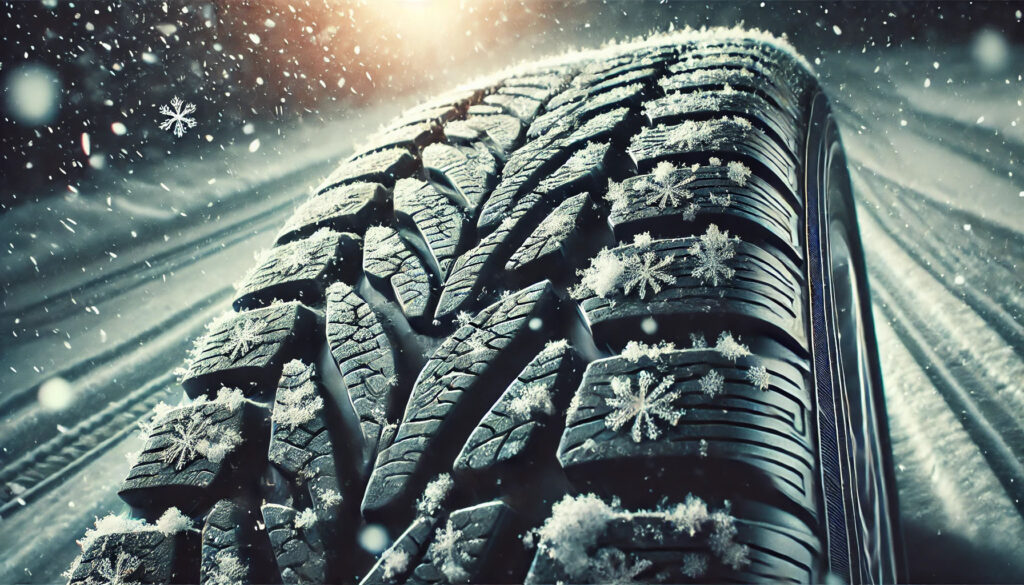
Tire maintenance isn’t a one-size-fits-all deal—especially when the seasons change. Different weather conditions require different tire care to ensure optimal performance and safety. Whether you’re preparing for snow or the summer heat, seasonal tire maintenance is key. Let’s break down how to take care of your tires all year long!
Winter Tire Preparation
When winter rolls in, your tires need a little extra TLC to handle the cold and icy conditions. First off, consider switching to winter tires, especially if you live in an area with heavy snow or freezing temperatures. Winter tires are designed with deeper treads and special rubber compounds that stay flexible in the cold, providing better traction on slippery roads.
Before the snow hits, check the tread depth on your winter tires (you can use the penny test) and inspect them for damage. Make sure they’re properly inflated and in good condition, as cold temperatures can cause pressure to drop. If you’re switching from all-season tires, make sure you get the timing right—don’t wait until the first snowstorm to change them!
Summer Tire Care
In the summer, tire maintenance becomes all about heat management. High temperatures can cause tires to wear down faster, so it’s important to monitor the tire pressure more often, as hot weather can increase pressure. Check your tires regularly to ensure they’re not under or over-inflated, as this can affect performance and safety.
Also, keep an eye on the tread wear. Summer conditions can cause the rubber to harden, leading to decreased grip, especially on wet roads. If you notice uneven wear, it might be time to rotate your tires or check the alignment. It’s also a good time to inspect the tires for any cuts or punctures caused by road debris or rough conditions.
All-Season Tire Management
All-season tires are pretty versatile, but they still require attention when transitioning between seasons. These tires are great for moderate climates, but they don’t offer the same specialized benefits as winter or summer tires. Keep an eye on the tread depth and check the tire pressure regularly, especially as temperatures fluctuate. In winter, they might not give you the same level of grip as dedicated winter tires, and in summer, they may wear more quickly under intense heat.
If you live in an area with mild weather, all-season tires can work year-round. But for those extreme seasonal changes, you might want to consider switching to specialized tires. Keep track of your all-season tire’s performance and adjust as needed!
Storage Techniques
If you’re swapping out your tires for the season, proper storage is crucial to keeping them in top shape. Store your tires in a cool, dry place away from direct sunlight. UV rays can degrade the rubber over time, so keep them in a shaded, indoor area. If you’re storing tires with rims, stack them upright. If they’re without rims, you can stack them on top of each other (but be sure to rotate them occasionally to avoid deforming the shape).
For extra protection, consider putting them in tire covers to shield them from dust and dirt. Keeping them clean and free from chemicals like oil or gasoline will ensure they stay in great shape for the next season.
Seasonal Performance Considerations
The performance of your tires is directly impacted by the season. In the winter, tires need to have a good grip on slick roads, while in the summer, it’s all about handling and durability under the heat. All-season tires are designed to handle a mix of conditions, but if you’re in an area with heavy snowfall or intense summer heat, it’s worth considering switching to specialized tires.
Remember, the condition of your tires—whether it’s tread depth, inflation, or wear—affects how your car handles on the road. So, whether you’re gearing up for winter snow or summer heatwaves, make sure your tires are ready to perform at their best!
Conclusion
Keeping up with tire maintenance is the key to safer driving and saving some cash. Start using these tips today, and you’ll see your car perform better and stay safer on the road!

